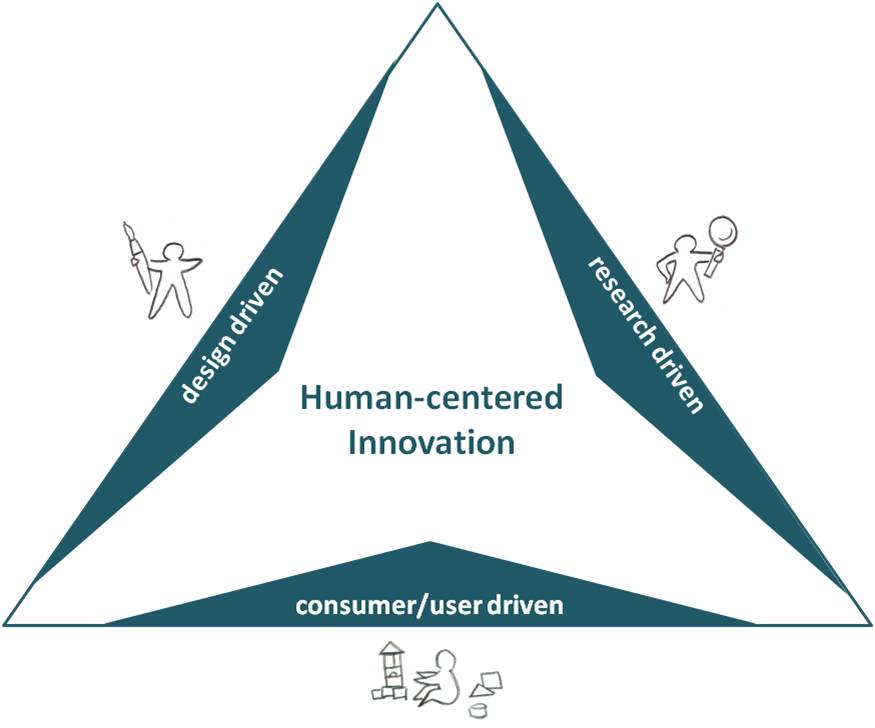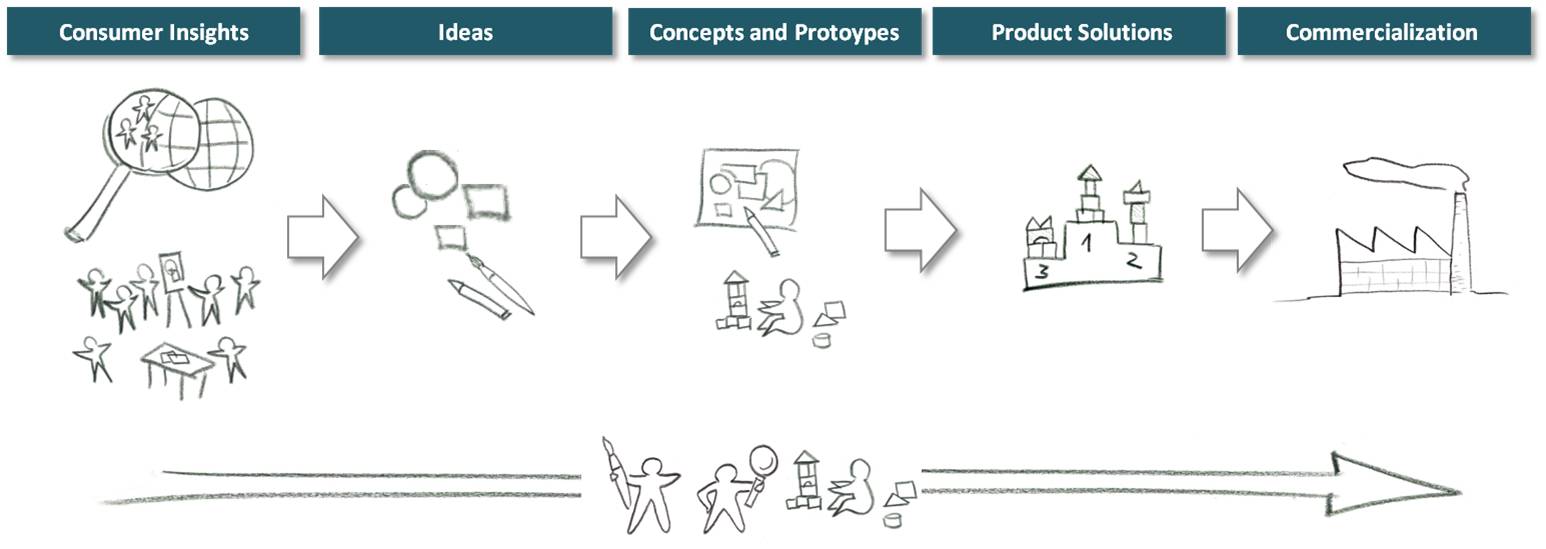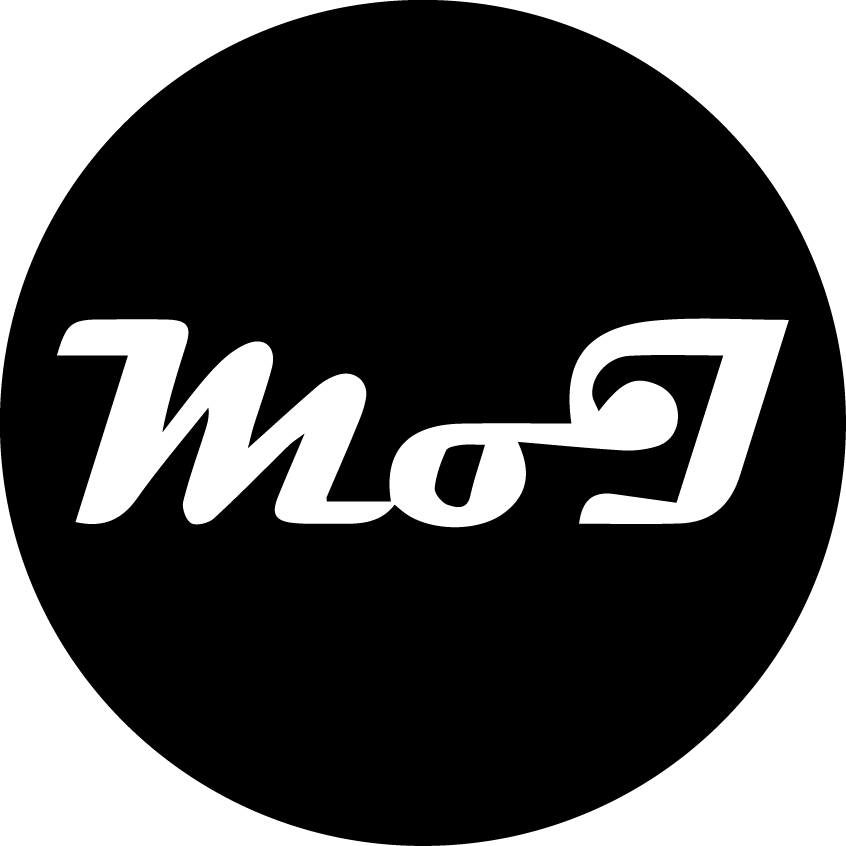The consequence of taking customer orientation serious is to integrate them right at the heart of value creation – in new product design and development. The transitions in innovation management during the last years allow us exactly to that in a more resolute way. By democratizing knowledge and information the social media revolution strongly supported the dissemination of concepts such as open innovation and co-creation and at the same time transformed people from content consumers into content producers and even co-designers. The consequence is a change in the prevailing role models of creating new products. The ability of interdisciplinary collaboration inside and outside the firm is more essential than ever before.
The changing role of product design for innovation
Industrial design is an applied science whereby the aesthetics and usability of mass-produced products are improved for marketability and production. The role of an industrial designer is to create and execute design solutions towards problems of form, usability, user ergonomics, engineering, marketing, production, brand development and sales. Design is based on the essential ability to combine empathy, creativity and rationality to meet user needs and drive business success. Unlike analytical thinking, design thinking is a creative process based around the “building up” of ideas. There are no judgments early on in design thinking. This eliminates the fear of failure and encourages maximum creativity and outside the box thinking in the ideation stage. This distinct role description was put up to test by Sam Lucente, the legendary design and innovation guru at HP. At the MacWorld conference in 2007 he described his epiphany that designers can no longer design products alone, using their brilliance and magic. They are no longer in the business of product and service design, he stated; they are really in the business of customer co-creation. In today’s world Designers have to meet the wants and needs of end users and consumer tribes which are connected, cutting-edge and informed in such an intense way that never existed before. This phenomenon will intensify year by year in the future. But if everyone is creative, then what is the role of the designer? First of all as releasing creativity is an original ability of designers they should play a central role in developing the techniques for non-designers that allow them to express and utilize their innovative power. Presently the development of web-based interaction tools such as crowdsourcing platforms and idea contests is mainly driven by software developers focusing on technical features and functions rather than on the objective to motivate consumers to unleash their visions of new products and services. Hence designers should engage as catalyst, amplifiers and pointsman to channel distributed creativity into creativity of the crowds. The sense for product aesthetics and the expert knowledge beyond creativity to realize complex products will stay an undisputed skill of excellent product designers.
The changing role of market research for innovation
Generally spoken market research is “the collection and analysis of data regarding opinions, needs, awareness, knowledge, views and behaviors of a population, through the administration of surveys, interviews, focus groups, polls, observation, or other research methodologies. The researcher serves mainly as translator between the outside world of consumers and the development and design disciplines inside the company. Right now we are living in a thriving world of digital networks with major impacts on social exchange as well as on the access to knowledge. Here the question arises for market researchers whether it is sufficient to simply mash together traditional market research techniques and social media in order to basically do research the same old way in a new web 2.0 environment. In the era of open innovation and co-creation consumers are encouraged to talk to each other rather than to researchers, opinions are offered, agreed with, disputed, challenged and developed. The traditional anonymous and one-way question and answer format changes towards a personal and two-way discussion and dialogue. Researchers will need to learn how to provide platforms and tools that support and serve peoples’ need for creative expression. The direct channels of customer interaction have to be complemented with interactions focusing on aggregating and disseminating customer-generated knowledge. Researchers will have to act as mediators, facilitator or innovation brokers creating continuous virtual bridges between companies and consumers. The challenge lies in evolving the ability to actually listen to and participate in online conversations, to utilize online communities as continuous source of innovation and building relationships by offering tools to communicate and co-create products together with other consumers.
Human-Centered Innovation: An Interdisciplinary Framework
In being aware of the changing roles of product design and market research in a connected world of empowered consumers, it is necessary to expand the current view of closed innovation and the mostly still prevailing manufacturer-active-paradigm. Human-centered innovation brings together (1) the creativity and product expertise of design and R&D experts, (2) the know-how and analytical skills of market researchers and (3) the consumer’s knowledge acquired through the actual use of the products which make them an essential external resource for new product development. The participatory mindset of consumers as co-creators goes beyond observing and listening to the point of a lively partnership throughout the innovation process. It is about communicating and interacting at eye level with consumers instead of squeezing out information by applying different techniques or making vague assumptions about their wants and needs. Human-centered innovation as indicated in figure 1 is embedded in the internal collaboration of the disciplines product design, R&D and market research and the external collaboration with consumers and users.

Figure 1: Interdisciplinary Framework of Human-Centered Innovation
Traditionally, innovation is mapped as a linear process from consumer insights, opportunity and idea generation to concept and product development on to test, evaluation and commercialization. In this process the customer is mostly the inactive object of study, and the researcher contributes data and knowledge by applying techniques like surveys, interviews or observations. The results are handed over to the designer who decides to assimilate or discard the information in order to be in line with his creative thinking and technological limitations. A human-centred approach ensures that innovation is not solely driven by data reports or hard science and engineering known as technology push. It sets a counterbalance which puts the human and social imperatives first and foremost. The linear model of innovation is embedded in the interdisciplinary collaboration of market researcher, developer, product designer and consumer in all stages of product development from end to end. The strict sequential separation and allocation of single innovation tasks either to a group of designers or researchers should be replaced by an ongoing team up (see figure 2). Although there are economies of specialization the activity of innovating successful products is an inductive one. Collecting and analyzing “need information” and the matching with “solution information”, technological feasibility and desirable products can only be realized in a strongly connected environment. This idea of interlocking innovation teams is not a new one especially in organizational theory. However until now, especially in large firms, there is no convincing answer to overcome still existing interface problems. This discussion is now gaining a new momentum as the era of co-creation and open innovation brings in the consumer as a new player in the value creation processes. Suddenly the question arises who is allowed to and who is in fact responsible to actively interact with the empowered consumer throughout the innovation process. Web-based practices speed up the realization of human-centered innovation improving speed, accuracy, and usability of customer input to the product development process.

Figure 2: Interdisciplinary and Interlocking Team up throughout the Innovation Process
Outlook
The ultimate goal of human-centered innovation is to drive a customer focus deep within a corporation and create an attitude and culture to be open for knowledge, share knowledge and collaboratively generate knowledge within and outside the firm. This new openness, however, does not mean any kind of looseness in innovation management but calls for coordination and facilitation with the help of concrete tools and methods for human-centered and open innovation. Besides promoting the opportunities of co-creating products together with external consumers, the main intention of this article is to emphasize the increased importance of strong interdisciplinary internal collaboration of product designers, R&D and market researchers for breeding successful innovation. Only the combination of external co-creation and internal collaboration maximizes the success of co-creation and open innovation programs (>> Co-Creation360) . Moreover embracing human-centered innovation also means to intervene in existing structures of power within the company which are built upon hierarchy. Co-creation threatens these structures as control is emitted to customers and users outside the firm. This change regarding the ownership of activities in the innovation process is only possible because the web has given a voice to end-users and consumers all over the world who were previously not even part of a dialogue. Only over a longer period of time this change in attitude will settle within firms, at the latest when the generation of digital natives is settled in the managing positions. Another challenge is the relation between researchers and designers. There will be a hassle about who is best suited to apply tools and methods to integrate customers. Again the lesson to learn is that a human centered-innovation process requires the initiative of an interlocking team of both disciplines. Designers and researchers may even be the same person having hybrid research and design skills.

